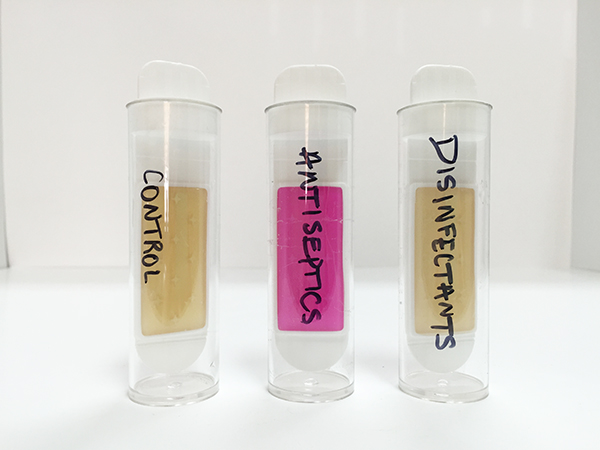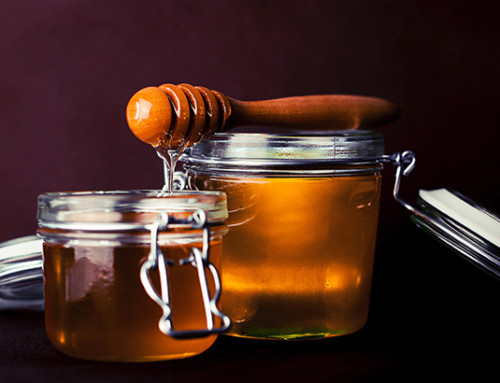Do antiseptics and disinfectants really work? Let’s find out in this biology lab where you’ll learn how to grow microbes on a dipslide and test the effectiveness of antiseptics and disinfectants on the growth of bacteria.
Materials:
Tryptic Soy-Rose Bengal Dipslides
2 Disinfectants (Examples: Lysol and Palmolive Antibacterial Detergent)
2 Antiseptics (Examples: Bactine and Triple Antibiotic Ointment)
Note: Just use whatever antiseptics and disinfectants you have on hand.
Procedure:
Start by collecting a soil sample in a sterile container. Using a Tryptic Soy-Rose Bengal (TSA/RB) dipslide, remove the paddle from the vial, being careful not to touch the agar surfaces. Gently press both sides of the dipslide to the soil sample. To assure an accurate area recovery, contact the paddle to 202cm of the surface by contacting the surface twice in separate 102cm areas. Replace the paddle in the vial, and repeat the process with two more dipslides.
You should now have three inoculated dipslides. Choose one dipslide to test the disinfectants, and label the vial “Disinfectants”. Apply one disinfectant to one side of the paddle (or dip the paddle in a sample of disinfectant), and use the other disinfectant on the other side of the paddle. Replace the paddle in the vial, and securely tape the paddle in the vial. Make sure you note which disinfectant was applied to each side.
Next label a second dipslide “Antiseptics”. Again, apply one antiseptic to one side of the paddle, and use the other antiseptic on the other side of the paddle. Replace the paddle in the vial, and securely tape the paddle in the vial. Make sure you note which antiseptic was applied to each side.
The third dipslide will not receive any further treatment, and this is your control. Again, securely tape the paddle in the vial.

Place the dipslides in a warm environment (not in direct sunlight) to “incubate”. Check for “zones of inhibition” after 48 and 72 hours. (Note: If you have an incubator, you can check the dipslides after 24 and 48 hours.)
The soil sample is the source of bacteria. The bacteria living in the soil are less likely to be human pathogens. Nonetheless, be sure students have taped the paddles in the vials after each dipslide has been inoculated and treated. Do not allow students to open the vials once the bacteria have started growing.
A significant amount of growth should occur fairly quickly, as soil is full of microbes. Observe each of the dipslides, and review how well the antiseptics and disinfectants worked. Did they work? Did one work better than the other? How well were the bacteria inhibited?
Going Further
You can try different versions of this experiment as well. For example, you can use one dipslide per disinfectant and antiseptic, applying it to the lower half of the dipslide (both sides) to observe how well growth was stunted.
The media used on a dipslide (Tryptic Soy and Rose Bengal) detect different things. Tryptic Soy will detect more bacteria while Rose Bengal will detect more fungi. Try observing if the disinfectants and antiseptics worked differently on bacteria and fungi. Did it inhibit one better than the other or did it work the same? Good luck and have fun!







Leave A Comment